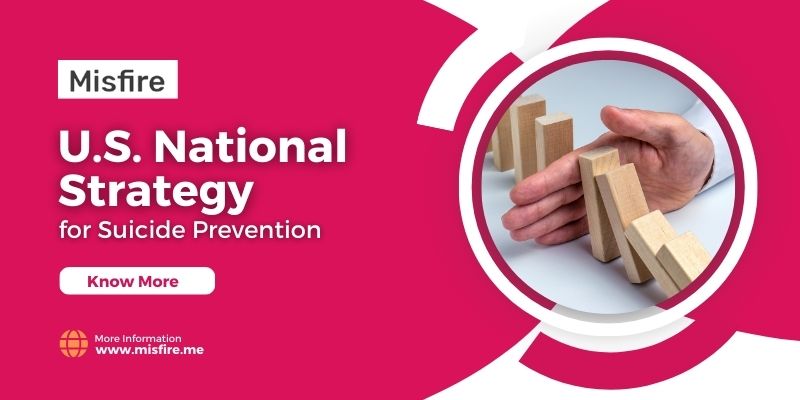Suicide is an urgent and growing public health crisis. In 2022 alone, more than 49,000 people in the United States died by suicide—that’s approximately one death every 11 minutes. Recognizing the gravity of this issue, the U.S. Department of Health and Human Services (HHS) has developed the 2024 National Strategy for Suicide Prevention—a comprehensive, whole-of-society approach aimed at addressing gaps in suicide prevention efforts.
Key Components of the National Strategy
The 2024 National Strategy for Suicide Prevention provides concrete recommendations across four strategic directions:
1. Community-Based Suicide Prevention
Goal 1: Establish effective, broad-based, collaborative, and sustainable suicide prevention partnerships.
- Explanation: Building partnerships across different sectors, including local government, healthcare providers, schools, and community organizations, ensures a comprehensive approach to suicide prevention.
Goal 2: Support upstream comprehensive community-based suicide prevention.
- Explanation: Focus on addressing root causes and early interventions, such as mental health education and support services, to prevent suicide before it reaches a crisis point.
Goal 3: Reduce access to lethal means among people at risk of suicide.
- Explanation: Implement measures to limit access to means of suicide, such as firearms and certain medications, particularly for individuals known to be at risk.
Goal 4: Conduct postvention and support people with suicide-centered lived experience.
- Explanation: Postvention involves providing support to those affected by a suicide attempt or death, helping them to cope and prevent further suicides in the community.
Goal 5: Integrate suicide prevention into workplace culture and other community settings.
- Explanation: Encourage workplaces, schools, and other community environments to adopt policies and practices that support mental health and suicide prevention.
Goal 6: Build and sustain suicide prevention infrastructure at various levels (state, tribal, local, and territorial).
- Explanation: Develop robust systems and structures to support ongoing suicide prevention efforts, ensuring sustainability and effectiveness.
Goal 7: Implement research-informed suicide prevention communication activities in diverse populations using best practices from communication science.
- Explanation: Use evidence-based communication strategies to raise awareness and educate the public about suicide prevention in culturally sensitive ways.
2. Treatment and Crisis Services
Goal 8: Implement effective suicide prevention services as a core component of health care.
- Explanation: Ensure that healthcare providers have the training and resources to identify and support individuals at risk of suicide.
Goal 9: Improve the quality and accessibility of crisis care services across all communities.
- Explanation: Expand access to crisis care services, such as hotlines and emergency mental health support, ensuring that help is available when it’s most needed.
3. Surveillance, Quality Improvement, and Research
Goal 10: Enhance the quality, timeliness, scope, usefulness, and accessibility of data needed for suicide-related surveillance, research, evaluation, and quality improvement.
- Explanation: Improve data collection and analysis to better understand suicide trends and the effectiveness of prevention strategies.
Goal 11: Promote and support research on suicide prevention.
- Explanation: Invest in research to identify new and effective methods for preventing suicide, with a focus on innovative approaches and underserved populations.
4. Health Equity in Suicide Prevention
Goal 12: Embed health equity into all comprehensive suicide prevention activities.
- Explanation: Ensure that all suicide prevention efforts are inclusive and address the unique needs of diverse populations.
Goal 13: Implement strategies for populations disproportionately affected by suicide, with a focus on historically marginalized communities, persons with suicide-centered lived experience, and youth.
- Explanation: Develop targeted interventions for groups at higher risk of suicide, providing tailored support and resources.
Goal 14: Cultivate an equitable and diverse suicide prevention workforce equipped to address community needs.
- Explanation: Train and support a diverse range of professionals in suicide prevention, ensuring they are equipped to meet the needs of different communities.
Why This Matters
The National Strategy recognizes that suicide prevention is not the responsibility of any single entity—it requires collaboration across sectors, including government agencies, healthcare providers, community organizations, and individuals. People with lived experience play a crucial role in shaping effective prevention efforts.
Conclusion
As we face the crisis of suicide, the 2024 National Strategy provides a roadmap for collective action. By implementing these goals and strategies, we can work toward reducing suicide rates, supporting those at risk, and promoting long-term recovery. Remember, you are not alone—reach out to friends, family, or a mental health professional if you need support. Empowering Stories of Survival and accessing the Best Depression Resources can provide hope and practical strategies for those struggling, demonstrating that recovery is possible.
Additional Resources and Support
If you or someone you know is struggling with thoughts of suicide, there are resources available to help:
- National Suicide Prevention Lifeline: Call 1-800-273-8255 for free and confidential support.
- Crisis Text Line: Text HOME to 741741 to connect with a trained crisis counselor.
- Local Mental Health Services: Contact local healthcare providers or community organizations for support and resources in your area.
By understanding and implementing the strategies outlined in the 2024 National Strategy for Suicide Prevention, we can create a supportive environment that promotes mental health and well-being for all.

